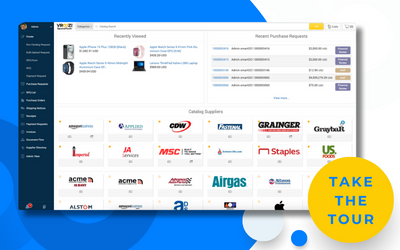Low user adoption is one of the biggest challenges companies face in increasing the efficiency of their procurement processes. They invest in promising software solutions, often SAP procurement systems, but find that employees are challenged to use them.
Inadequate user adoption—and disappointing digital transformations more generally—are not just a problem in the procurement space. According to the McKinsey Global Survey, only 20% of businesses achieve more than three-quarters of the expected gains, and even fewer achieve anticipated cost savings.
However, resistance to procurement software has wide-scale financial and operational impacts across the company. Businesses need to understand why users refuse to adopt procurement software solutions and what they can do about it.
In this article, we explore the impact of low user adoption of SAP procurement systems, examine why your procurement organization resists using them, and consider what your business can do to increase user adoption.
The Causes of Low User Adoption
It’s often observed that the people who buy enterprise software aren’t the people who use it. The buyers are impressed by digital transformation promises, but the end-users find the reality somewhat different. Employees want to maximize productivity, and they’ll evade software that slows them down.
Complex Interface and Navigation
User interface complexity is a key reason for users’ low adoption of SAP procurement systems. Non-expert users may find the software overwhelming, with numerous screens, fields, and options to navigate.
A steep learning curve leads to frustration and resistance, discouraging users from fully embracing the system. If the interface is not intuitive or user-friendly, users may struggle to complete tasks efficiently, resulting in a preference for manual processes or shadow IT solutions.
Unintuitive user interface design is a particular issue for older SAP procurement solutions, including SAP SRM and SAP S/4HANA, but it also reduces adoption for SAP Ariba solutions, where complex interfaces and workflows may require substantial retraining for efficient use.
Lack of Customization
If the system is not adequately customized to align with the organization’s specific procurement processes and requirements, users can perceive it as irrelevant or burdensome. SAP procurement systems offer a wide range of functionalities and configurations. However, customization is often complex and expensive, requiring deep system knowledge and expertise in the specifics of the SAP platform.
Inadequate Integration with Existing Systems
Users may face difficulties accessing and sharing data if the procurement system does not seamlessly integrate with other critical applications, such as financial systems, inventory management software, or supplier management portals. Lack of integration leads to manual data entry, duplication of efforts, and system inconsistencies.
This is a particular issue for businesses who may rely on software that isn’t easily integrated with SAP solutions designed with large enterprise organizations in mind.
Lack of Mobile or Remote Accessibility
Users who work remotely or in the field often need to access procurement software from multiple locations on the devices they have with them. For example, purchase requisition approvals or goods receipt processes are frequently carried out on mobile devices. Limited mobile functionality or the inability to perform tasks remotely can discourage users from fully utilizing the system.
Misalignment with Business Processes
Adoption can suffer if the system forces users to significantly change their workflows or does not reflect the needs different departments or business units. Users may feel that the system is not tailored to their needs, and that rather than facilitating purchasing and other procurement activities, the software gets in their way.
Insufficient Training
Inadequate training significantly contributes to low user adoption of SAP procurement systems. Without comprehensive training, users may develop alternative procedures or rely on outdated processes, undermining the system’s benefits.
The need for training is a side effect of the software’s complexity. Training requirements can be significantly reduced by using a procurement solution that offers intuitive interfaces and workflows out of the box.
How SAP Procurement Disuse Hurts Your Business
When users fail to adopt SAP procurement systems, it reduces efficiency and productivity in the procurement process and the wider supply chain. Users resort to manual workarounds or unvetted software, resulting in fragmented and inconsistent procurement practices. Use of unmanaged tools may also lead to compliance, security, and data protection risks.
Inconsistent Procurement Practices
Different departments or individuals may follow their own processes, leading to a lack of uniformity and compliance. Inconsistency makes it challenging to enforce procurement policies, ensure contract compliance, and maintain control over spending.
Decreased Spend Visibility and Control
When users do not fully utilize procurement systems, gaining comprehensive visibility into the business’s spending patterns is difficult. Without accurate and timely data, decision-makers lack the insights to identify savings opportunities, optimize supplier relationships, and make informed strategic decisions.
Increased Risk of Fraud and Errors
When transactions are conducted outside the system, there is a lack of procurement transparency. Low visibility opens the door to fraudulent activities, such as unauthorized purchases, kickbacks, or supplier collusion. Additionally, manual processes are more prone to human errors, resulting in inaccurate orders, incorrect pricing, or missed discounts.
Delayed Return on Investment (ROI)
Implementing SAP procurement systems requires significant time, resources, and financial costs. When users do not fully leverage the software’s capabilities, the anticipated benefits, such as process efficiency, cost savings, and improved decision-making, cannot be fully realized.
Increased Rogue Spending
When users bypass established procurement processes and make purchases outside the system, controlling and monitoring spending becomes challenging. Rogue spending results in higher costs, non-compliance with procurement policies, and a lack of transparency in financial reporting.
Techniques for Boosting Procurement Software Adoption
We’ve seen how low user adoption can hurt your business’s efforts to increase spend visibility, take complete control of procurement, and reduce procurement costs. Your instinct might be to double down on SAP, compelling users to work with a platform that hurts their productivity.
A better approach is to use a solution like Vroozi, which integrates with various SAP procurement software, including SAP S/4HANA, SAP ECC, and SAP SRM. Vroozi can boost user adoption, helping you overcome the abovementioned problems while continuing to use your existing SAP platforms.
User-Friendly Interface
To boost user adoption, it is essential to prioritize a user-friendly interface. The interface should be intuitive, visually appealing, and easy to navigate. Ideally, it will provide a user experience with affordances and workflows that are already familiar to users.
For example, an e-commerce-like supplier marketplace creates a purchasing process that allows buyers to shop for products and services at work much as they shop at home. The details of creating purchase requisitions and purchase orders are handled transparently by procurement automation. In the same way, streamlined requisition and invoice approval processes speed up approvals and accelerate the entire procurement cycle.
Mobile and Remote Accessibility
Enabling mobile accessibility can significantly enhance user adoption of SAP procurement systems. Users should be able to access the system from various devices, including smartphones and tablets, and perform tasks on the go.
Mobile-friendly interfaces, responsive design, and offline capabilities give users the flexibility they need to work efficiently regardless of their location.
Customization and Flexibility
The system should be flexible enough to accommodate unique workflows, approval hierarchies, and business rules. Customization should balance meeting user needs and maintaining system integrity and performance.
Improved Procurement Automation Capabilities
Enhancing the automation capabilities of SAP procurement systems can streamline processes and increase user adoption. Automated workflows, AI-powered data capture, and intelligent document processing can reduce manual efforts and minimize errors.
Users can focus on higher-value activities by automating repetitive tasks, such as purchase requisition approvals and purchase order generation, invoice capture and matching, and digital payments. Automation improves efficiency while making the procurement process more user-friendly and less time-consuming.
Smooth Integration with Existing Systems
Seamless integration between SAP procurement systems and existing enterprise systems is crucial for user adoption. Users should be able to access and share data across systems without manual intervention or duplication of efforts.
Integration with financial systems, ERP systems, and supplier portals enables a holistic view of procurement activities and facilitates informed decision-making. Smooth integration reduces the need for users to switch between multiple systems, enhancing productivity and user satisfaction.
Enhanced Visibility and Control
Enhanced visibility and control over procurement activities can boost SAP procurement system adoption. Users should have access to real-time data, dashboards, and reports that offer insights into spending patterns, supplier performance, and contract compliance.
Enabling self-service capabilities, such as guided buying and catalog search, empowers users to make informed purchasing decisions. Robust approval workflows and spend controls ensure procurement activities align with organizational policies and budgets, increasing user confidence in the system.
Perceived Value and Efficiency Gains
Users are more likely to adopt procurement systems when they perceive tangible value and efficiency gains. Demonstrating how the system can streamline their work, reduce manual efforts, and improve decision-making can increase user buy-in.
Regularly collecting and sharing success metrics, such as cost savings, process improvement, and user satisfaction, reinforces the system’s value proposition. Showcasing real-life examples of how the system has benefited other users or departments can inspire adoption and create a positive perception of the technology.
Boost SAP User Adoption with Vroozi Procure-to-Pay
With our SAP procurement integration, you can boost user adoption for SAP S/4HANA—and SAP ECC and SAP SRM—by using them alongside Vroozi’s modern, streamlined, and cost-efficient procure-to-pay system, which includes:
- An intuitive digital marketplace
- Custom approval workflows
- Procure-to-Pay automation
- eProcurement and integrated supplier catalogs
- Purchase order automation
- Invoice automation
- Digital payments
To see Vroozi in action, experience a live version of the app or request a personalized walkthrough from one of our team members.


